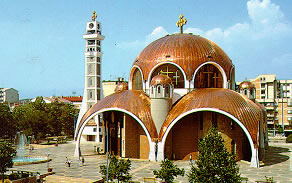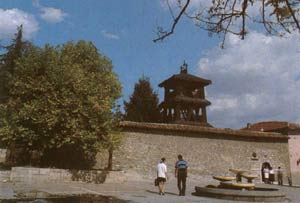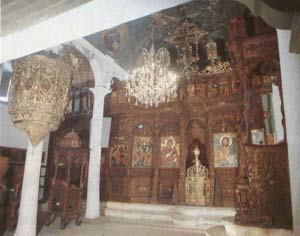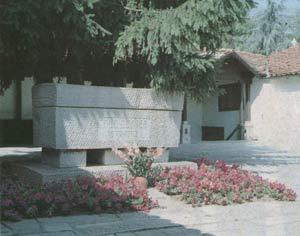Crkvi vo Skopje
Previous | Home | Next
Crkvi vo SkopjePrevious | Home | Next |
Soborna Crkva |
 |
The Church of St. Saviour Sveti Spas An older church for the same saint had first been built on an older sacred site in the middle of the 16th century. Remains of the southern wall with a preserved fresco icon bear witness of that old building. They were discovered after the disastrous earthquake in Skopje in 1963, and were incorporated in the southern wall of the new church built later. The church assumed its present shape during the 19th century. With their donations, traders and trade guilds from the Old Bazaar aided the completion of one of the most magnificent wood carved iconostases in 1824. The carving work was entrusted upon the reputed wood carving group headed by master Petre Filipovski, known under his nickname "Garka", from Gari Village of Mala Reka. The group also included his brother Marko, and Makarie Frckovski from Galicnik Village. Their collective work lasted six years (1819-1824). The iconostasis is 10 metres long and six metres high. The carved components are arranged in five horizontal zones. The upper part of the iconostasis ends with a large "snake cross" and the accompanying icons of the Virgin and St. John. This part of the iconostasis is gold-plated. The master of wood carving, Petre Filipovski-Garka, and his group also did the iconostases in the churches of the monasteries of Lesnovo and St. Jovan Bigorski. The latter is considered to be a masterpiece of the art of wood carving in Macedonia.The theological presentation on the carved iconostasis of St. Saviour Church reveals topics from the Old and New Testaments. Various geometrical ornaments are employed, as well as figures of the flora and fauna. A novelty introduced in this iconostasis are folklore motifs and self-portraits of the wood carvers in the process of work. In addition, the iconostasis displays a large number of icons arranged in two rows. The large throne icons are in the lower row, and the smaller festivity icons come in the upper row. Icons can also be seen on the other walls outside the iconostasis. The majority of them belong to the work of the renowned Dico Zograf of Tresonce Village.
In the church naos (inner part, shrine), there is a carved box in which the bones of the eminent Macedonian revolutionary Goce Delcev (1872-1903) were transported, and they now rest in the marble sarcophagus in the churchyard.The church inn today hosts the Institute of Skopje Cultural Heritage Preservation. |
|||
| The Church of St. Saviour | ||||
 |
||||
 |
||||